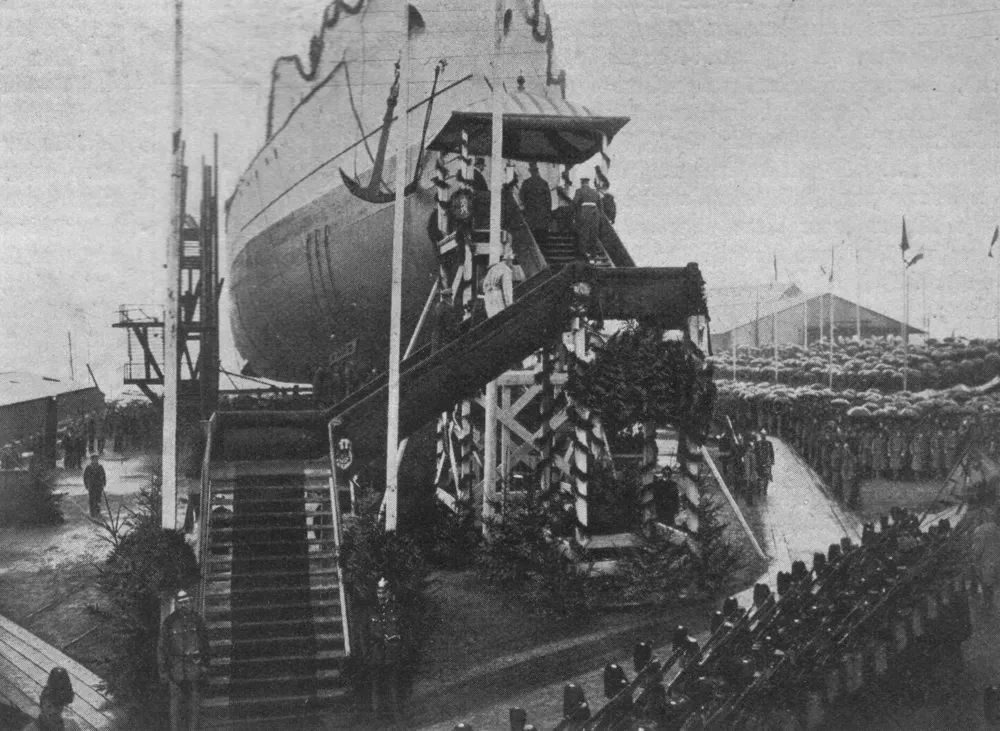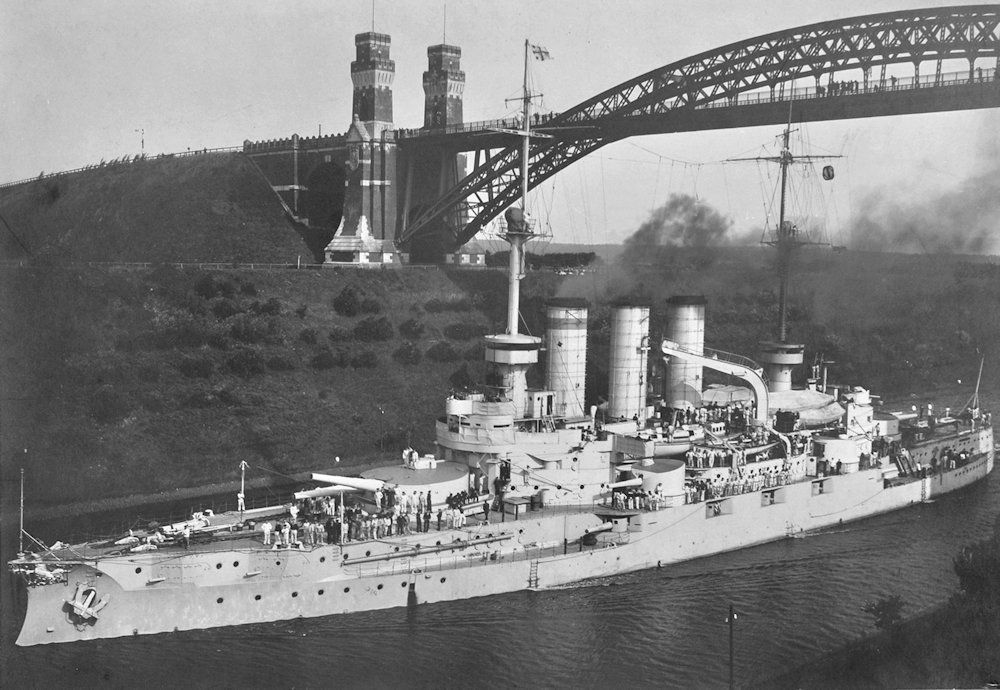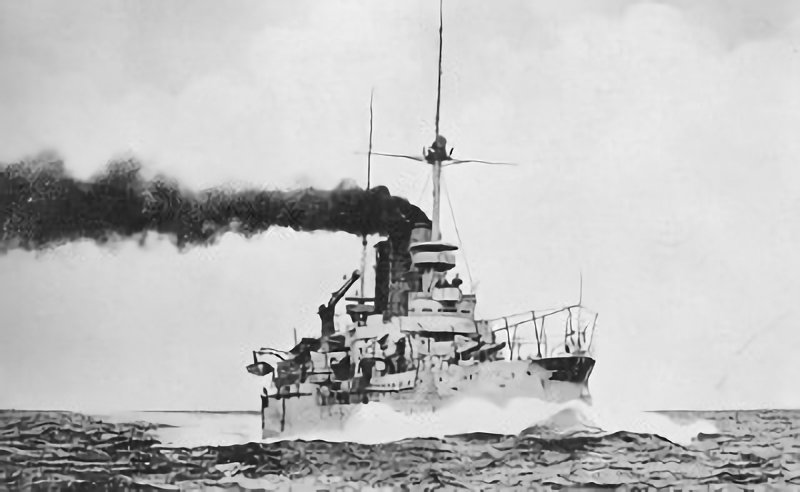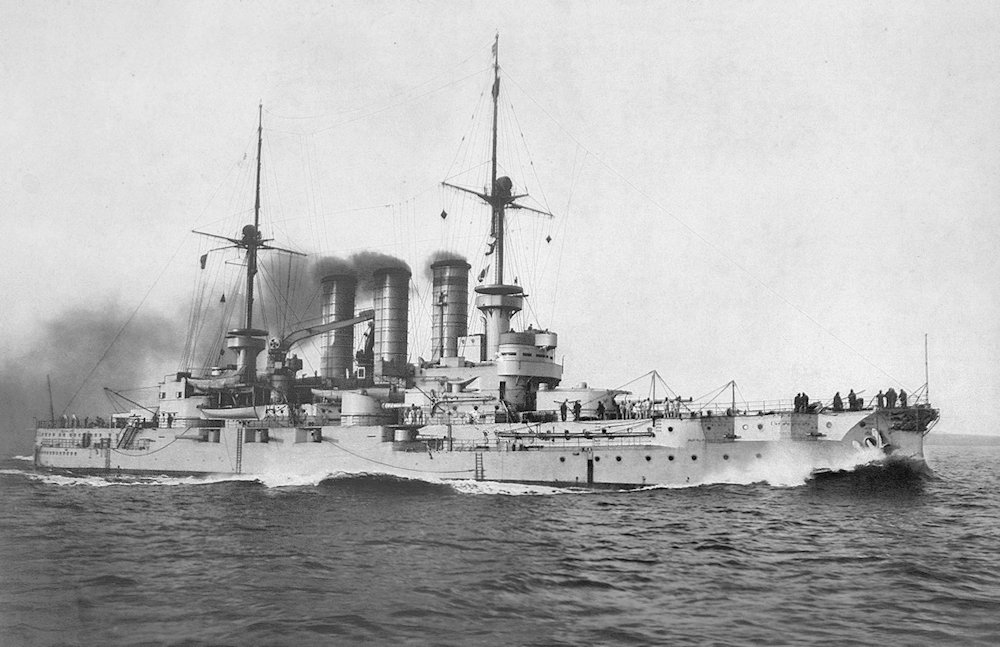German Pre-Dreadnought Battleship SMS Braunschweig
SMS Braunschweig was the lead ship of the Braunschweig-class battleships (along with her sister ships Elsass, Lothringen, Hessen and Preussen), the first German capital ships to carry the heavier 28 cm (11 in) main guns that became standard in subsequent designs. Named after the Duchy of Brunswick (Braunschweig in German), she was laid down at the Schichau-Werke shipyard in Danzig in 1901, launched on 20 December 1902, and commissioned on 14 October 1904.
She represented a significant step forward from the earlier Wittelsbach-class, but like her sisters, she was rendered obsolete almost immediately by the commissioning of HMS Dreadnought in 1906.
Pre-War Service
As the lead ship of her class, Braunschweig was heavily involved in fleet manoeuvres and training cruises during the years before 1914. She served in the I Battle Squadron of the High Seas Fleet, operating in the Baltic and North Seas. She also took part in ceremonial visits abroad, representing Germany’s growing naval power.
First World War Service
At the outbreak of the First World War, Braunschweig, though already outdated, was mobilised with the High Seas Fleet. Along with her sisters, she was initially employed in the North Sea on patrol and guard duties.
In August 1915, she was sent with several other older battleships into the Baltic Sea to support the German attempt to enter the Gulf of Riga, an operation intended to neutralise the Russian Baltic Fleet and secure the sea for further operations. Although she did not directly engage the Russian battleship Slava (as her sister Elsass did), she provided gunfire support and cover for minesweeping and operations against Russian naval forces.
By 1916, after the Battle of Jutland, the German Navy decided that older pre-dreadnoughts like Braunschweig were too vulnerable to modern battleships and submarines. She was withdrawn from frontline duty and relegated to training and secondary roles for the remainder of the war.
Post-War Service and Fate
After the German defeat in 1918, the Treaty of Versailles allowed Germany to retain eight old battleships for coastal defence. Braunschweig was among those kept, serving with the Reichsmarine throughout the 1920s.
She was eventually decommissioned in 1931 and broken up for scrap in 1932, ending nearly three decades of service.
Specifications (as built):
- Class: Braunschweig-class battleship
- Displacement: 13,200 t (full load)
- Length: 127.7 m
- Beam: 22.2 m
- Draught: 8.1 m
- Propulsion: 3-shaft vertical triple-expansion steam engines, 16 boilers
- Power: 16,000 ihp
- Speed: 18 knots
- Range: approx. 5,200 nmi at 10 knots
- Crew: 35 officers, 708 men
- Armament:
- 4 × 28 cm (11 in) guns (2 × twin turrets)
- 14 × 17 cm (6.7 in) casemate guns
- 18 × 8.8 cm (3.45 in) quick-firing guns
- 6 × 45 cm (17.7 in) torpedo tubes
- Armour:
- Belt: up to 225 mm
- Deck: 40 mm
- Turrets: up to 250 mm
- Conning tower: 250 mm









